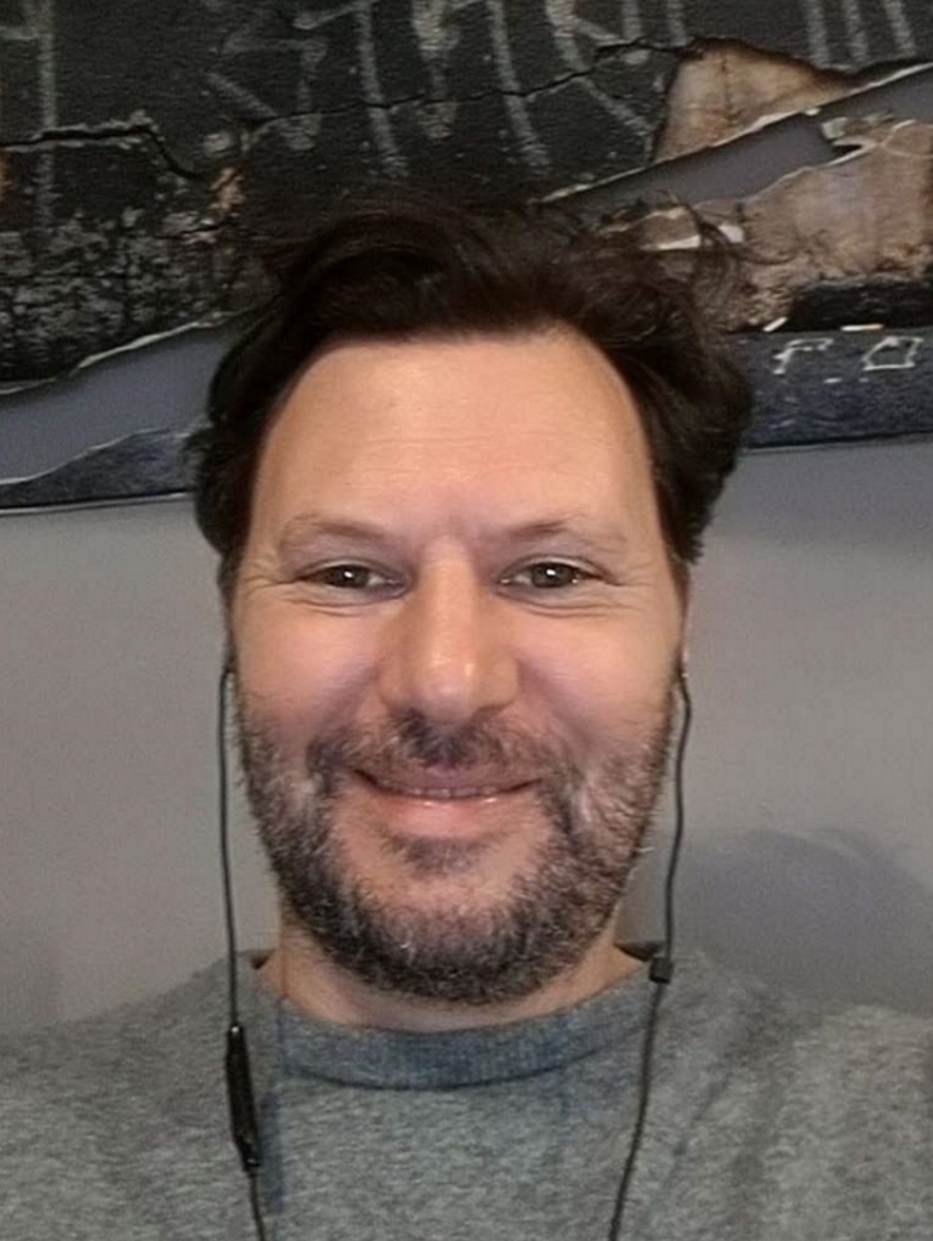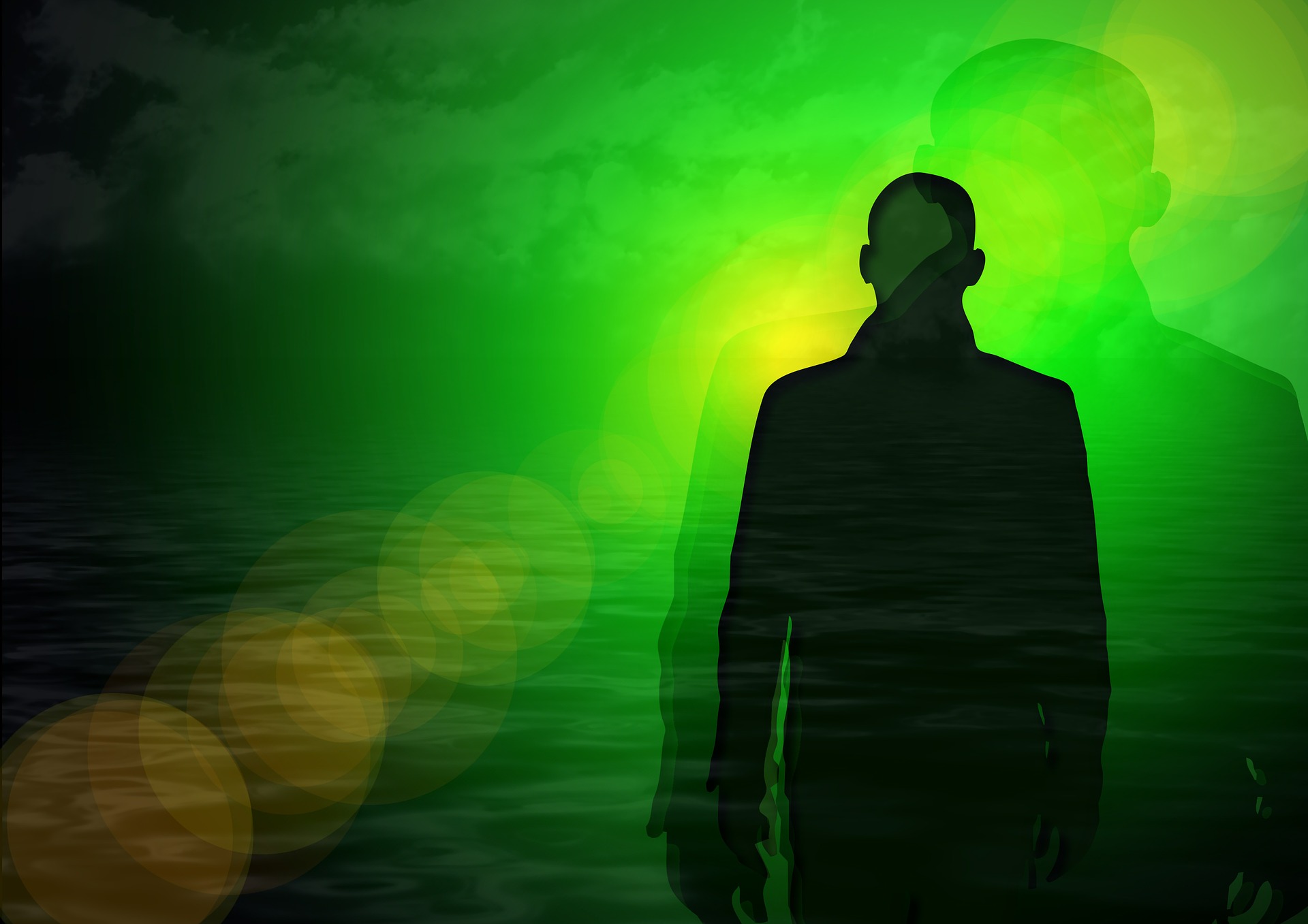
Although heavily influenced by his early tutor and confidante, Sigmund Freud, Jung’s model of the mind was more evolved than the Austrian’s. In my opinion, Jung’s model of the mind is easier to understand how unconscious content tries to make itself known to the conscious mind.
In brief, Jung felt that split-off fragments of consciousness create a complex in the individual. By observing complexes and one-sided attitudes, it is possible to find a solution and bring the individual to balance.
Jung also associated complexes with archetypes which he described as ‘psychic energies’ that act “like agents that tend towards the repetition of these same experiences.”
The archetypes are patterns of energy that take possession of the ego and prompt us into habitual behaviours. But also in repetitive patterns of life experiences such as self-sabotage, getting frustrated over little things, a desperate need for stimulation etc.
Thought-Provoking Quote
“I wanted to express the fact that one or other basic instinct, or complex of ideas, will invariably concentrate upon itself the greatest sum of psychic energy and thus force the ego into its service. As a rule the ego is drawn into this focus of energy so powerfully that it identifies with it and thinks it desires and needs nothing further. In this way a craze develops, a monomania or possession, an acute one-sidedness which most seriously imperils the psychic equilibrium….“A man thinks that he wills and chooses, and does not notice that he is already possessed, that his interest has become the master, arrogating all power to itself.”
~ Carl Jung, CW7 Two Essays on Analytical Psychology [1]
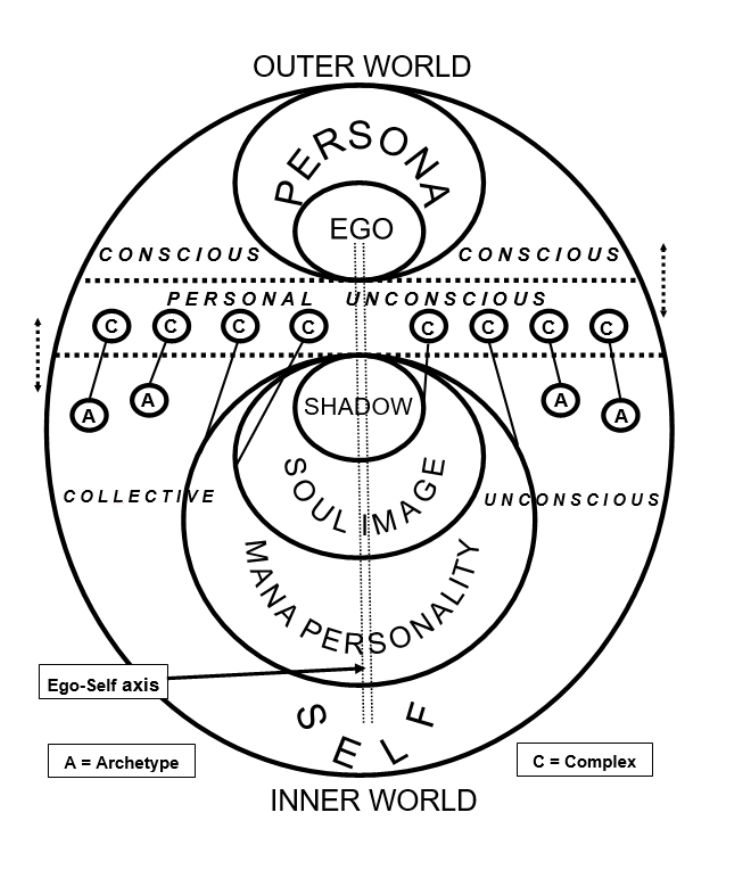
Like Freud, Jung recognised the conscious mind as the ego, which contains thoughts, feelings, actions, moods, emotions and perceptions that we are aware of in real-time.
The conscious mind is widely regarded to be what we are consciously aware of together with the “I” that identifies itself with the physical body and the material world. What is disputed is where content that appears in the conscious mind comes from.
It is promulgated by Jungians that the ego is the outer-facing aspect of consciousness and is thus only aware of what we have experienced in our lives. These experiences are stored as memories in the personal unconscious.
Together with the ego, Jung also felt the conscious mind consists of the Self — the inward-facing aspect of the personality. As you can see from the diagram above, there is a direct line between the ego and the Self which was envisioned by Jung as an ego-self axis.
The two voices that appear in your head are like the visualisation of the angel and the devil on your shoulder.

We can, therefore, assimilate that Jung’s Self corresponds with Freud’s superego in that it is in touch with both the depths of the unconscious mind and the light of the conscious mind. Read more about Freud’s model of the mind here.
However, when the ego is “one-sided”, the light of the conscious mind is a dim one for the Self. Tucked away in the mythical sea depths, cave or forest, we barely hear the voice whispering to us. It is drowned out by emotionally charged content the ego responds to.
In Jung’s model of the mind, it is the role of the Self which belongs to the conscious mind to persuade us to make a decision that is contrary to the ego. The ego responds to existing subconscious programs whereas the Self attempts to upgrade the subconscious.
Thought-Provoking Quote
“….careful awareness of the transpersonal level of the psyche is required. This means one must be Self-oriented rather than ego-oriented.”
~ Edward Edinger, Anatomy of the Psyche [2]
As we discover in the Master Mind Content Essential Self-Development Program, the ego and the Self often find themselves in conflict. In such cases, a resolution and reconciliation are necessary to bring the whole personality back to harmony.
Jung stated throughout his work that the goal of healing must be to bring the Self-ego axis into balance. This is how we achieve long-term harmony and enjoy a happy, successful and fulfilling life.
To develop the “harmony” that Jung speaks of, unconscious content that has been split off, ignored or forgotten has to be brought into conscious awareness. That is the other role of the Self.
In Jung’s model of the mind, the Self has a presence in the conscious mind, personal unconscious and the collective unconscious. It is, therefore, closer to your instinct and knows what you actually NEED as opposed to what the ego thinks it wants.
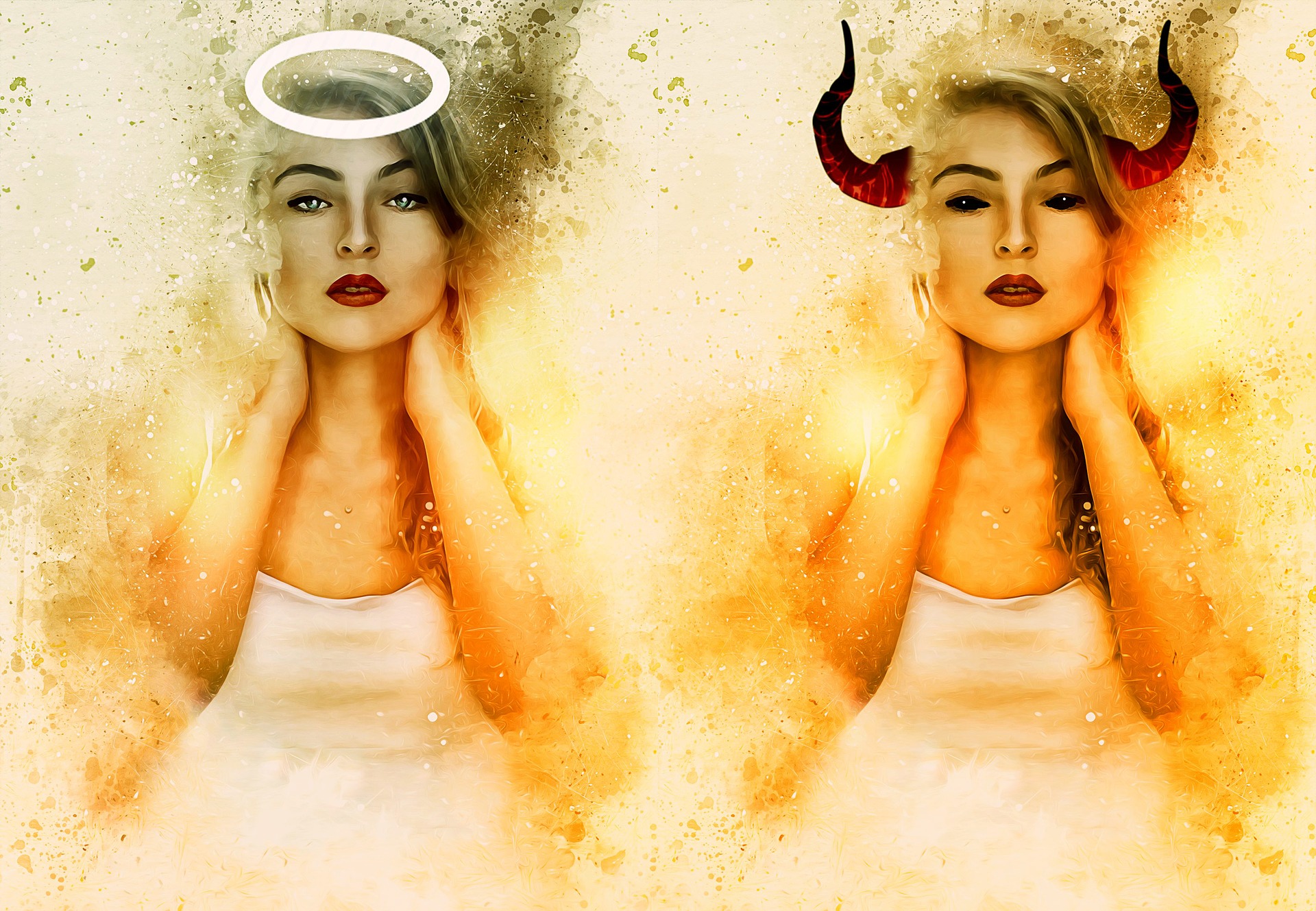
Jung’s model also includes the persona within the conscious realm. The Swiss imagined the persona as the mask we wear in public to fit in with others, calling it out as “a compromise between individual and society as to what a man should appear to be. [3]
The persona is “the individual’s system of adaptation to or the manner he assumes in dealing with the world.” [4] This archetypal quality surfaces to “enlarge” the personality when the ego does not have a subconscious program.
Jung believed that “enlargement of the archetypes can change our internal structure.” When the unconscious rises and inflates the ego, it is a signal that the ego needs to develop. The archetypal energy serves as a compensatory factor. [5]
Inflation may not be a bad thing for individuals who are self-aware and have a reasonable amount of emotional stability to accept their wrongdoing as an opportunity for growth. Otherwise, the insecure individual is more likely to become arrogant, greedy, aggressive and boastful. Or, leaning towards their good nature, the wife beater behind closed doors is altruistic and compassionate in public.
Recognising the rise of an archetype can help us to integrate the buried aspect of our personalities. Archetypes are specific patterns of thought actions and behaviours, “habitual currents of psychic energy” [6] that are common to all mankind. [7]
However, Jung also warned against allowing the ego to identify with the persona otherwise we can fall into the trap of living the life of others rather than our own, thus stunting any concept or idea of our individuality. We deal with this issue in the Everyman archetype.
Thought-Provoking Quote
“A certain kind of behaviour is forced on them by the world, and professional people endeavour to come up to these expectations. The danger is that they become identical with their personas… henceforth he lives exclusively against the background of his own biography.”
~ Carl Jung, CW9 Part 1, The Archetypes and the Collective Unconscious [8]
In Jung’s model of the mind, the personal unconscious is equivalent to Freud’s preconscious and stores memories. For simplicity, Master Mind Content has called this aspect of consciousness subconscious programs in order to differentiate between the two layers of the “unconscious” as discussed in the Essential Self-Development handbook.
The first layer is what Jung called the personal unconscious which is predominantly formed through an individual’s life experiences. This is where memories that are accessible and retrievable are stored. This includes emotions, behaviours and perceptions. Memories can be active most of the time in the form of habits, occasionally, as and when needed, or rarely.
Although the contents of the personal unconscious can be habitual, they may not always be fully formed aspects of the personality. This means that although the ego associates with the information it is receiving, we are not fully conscious of the motivation behind the instruction. This latter case gives rise to the “Shadow”.
Thought-Provoking Quote
“This discovery means another step forward in our understanding: the recognition, that is, of two layers in the unconscious. We have to distinguish between a personal unconscious and an impersonal or transpersonal unconscious. We speak of the latter also as the collective unconscious, because it is detached from anything personal and is common to all men, since its contents can be found everywhere, which is naturally not the case with the personal contents. The personal unconscious contains lost memories, painful ideas that are repressed (i.e., forgotten on purpose), subliminal perceptions, by which are meant sense-perceptions that were not strong enough to reach consciousness, and finally, contents that are not yet ripe for consciousness. It corresponds to the figure of the shadow so frequently met with in dreams.”
~ Carl Jung, CW7 Two Essays on Analytical Psychology [9]
The contents of the personal unconscious, we could say, are information that has been absorbed from the environment, processed and retained by the central nervous system. The information is stored as a “memory” in the subconscious and prompts a reaction to circumstances in our environment or when thinking about the past.
For example, you may think back over a heated conversation you had with someone and, once again, feel the emotional reaction to something they said.
For more information about how the nervous system filters out information and splits off aspects of the personality refer to the articles How The Nervous System Works and Dis-member | Re – member.

Jung also proposed that emotionally charged content resides amongst personal content. Emotionally charged content has the biggest influence over our behaviours which is why it’s so hard to overcome bad habits.
But emotionally charged content can also show up as complexes which have been described as organised groups of thoughts and feelings which project themselves into the world at any given opportunity. James Hillman notes: “These are the archetypes, the persons to whom we ultimately owe our personality.” [10]
Thought-Provoking Quote
“The idea of the pneuma as the Son of God, who descends into matter and then frees himself from it in order to bring healing and salvation to all souls, bears the traits of a projected unconscious content. Such content is an autonomous complex divorced from consciousness, leading a life of its own in the psychic non-ego and instantly projecting itself whenever it is constellated in any way — that is, whenever attracted by something analogous to it in the outside world.”
~ Carl Jung, CW 12, Psychology and Alchemy [11]
Complexes are formed in response to significant life experiences and can influence attitudes, moods, feelings, beliefs and perceptions. But most critically, they pull on the emotional charge they hold and prompt us to take on a corresponding behaviour.
This is why habits are so hard to overcome and why the subconscious program needs upgrading.
The most controversial inclusion in Jung’s model of the mind is the collective unconscious. It is this aspect that separates the Swiss’ model from Freud’s. And largely divides opinion among academics.
You are free to make up your own mind, but Master Mind Content backs Jung’s model of the mind. We call the collective unconscious the Superconscious because it contains all the parts of our personalities we need to be happy, successful and fulfilled.
Whereas Freud believed the conscious mind is only influenced by a personal influence (environment, genes and repressed emotions), Jung felt there is also an external influence that falls outside personal experience but belongs to all humankind.
Thought-Provoking Quote
“This deeper layer I call the collective unconscious. I have chosen the term “collective” because this part of the unconscious is not individual but universal; in contrast to the personal psyche, it has contents and modes of behaviour that are more or less the same everywhere and in all individuals. It is, in other words, identical in all men and thus constitutes a common psychic substrate of a suprapersonal nature which is present in every one of us.”
~ Carl Jung, CW9 Part 1, The Archetypes and the Collective Unconscious [12]
The collective unconscious contains universal symbols and themes known as archetypes. Archetypes are innate, primordial images and patterns which appear in the psyche of mankind and prompt us to react to our environment in certain ways.
How we respond to our environment is determined by the information in the personal unconscious. But archetypes can become a subconscious program in the personal unconscious by initially projecting onto the ego and assimilating an experience. If the ego associates with the archetype, the archetype can take possession of the ego. (More on that later!)
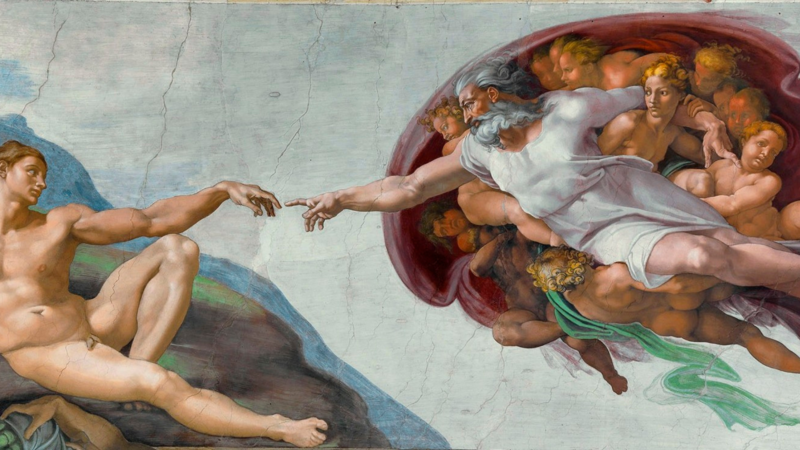
The reason for an archetype projecting onto the ego is because the ego doesn’t have the right information that enables us to manage our environment. That means that split-off fragments of our personality also influence how we interact and experience the world.
But this is also where the Superconscious can help to upgrade our subconscious programs.
Like Freud, Jung’s model of the mind depicts the conscious mind as comprised of two components which he called the ego and the Self.
In brief, the ego is the outer-facing aspect of consciousness. Its function is to interact with the external environment. The ego only knows what we have experienced and its role is to protect our emotional and physical survival together with our self-image.
That means the ego needs to be developed, or programmed with information, that is appropriate for the environment and the circumstances you find yourself in. The ego has to engage with life and be challenged in order to learn and grow.
However, an underdeveloped ego that is fed by fragmented programs is the subject of inflation which causes attachments which often serve as a coping mechanism, defence mechanism or a belief system. Attachments fill the void that opens up following the separation from the Self (i.e., comfort eating, alcohol, drugs, shopping, obsessions etc).
The Self is the inward-facing aspect of consciousness. Its function is to bring unconscious content to the awareness of the conscious mind. We could say its role is to train the ego so that we can develop all the qualities we need to live a happy, successful and fulfilling life.
The primary goal of the Self is to integrate consciousness so that we can evolve and thrive. Like Freud’s superego, the conscious aspect of the Self is the quieter voice we hear in our heads.
But as noted by the Jungian scholar Edward Edinger, the Self should have autonomy over the ego. In this way, our inner wisdom is brought into the light of conscious awareness.
Thought-Provoking Quote
“The Self is the ordering and unifying center of the total psyche (conscious and unconscious) just as the ego is the center of the seat of subjective identity whilst the Self is the seat of objective identity. The Self is thus the supreme psychic authority and subordinates the ego to it. The Self is most simply described as the inner empirical deity and is identical with the imago Dei.”
~ Edward Edinger, Ego and Archetype [13]
Think of the Self as our essence, our True Nature. It represents the whole personality. We have access to this side of our nature if we allow it to be heard. Unfortunately, most of the time, the voice of the Self is drowned out by the noise of the ego.
Consciousness wants us to develop the whole personality. Doing so enables us to excel at life, feel great and achieve optimum health. So the role of the Self is to bring the split-off aspects of our personality to the attention of the conscious mind where the knowledge can be used to develop the ego. Self-awareness is only a catalyst for development.
You still need to take decisive action by engaging in life and developing the archetypal quality you need to move beyond surviving mode and into thriving mode.
Jung suggested the Self does this by creating complexes that demonstrate archetypal patterns of behaviour. If we observe our complexes, we can identify the archetype and the quality that is trying to emerge and needs to be integrated.
Jung felt that repressed consciousness shows up in the psychobiological system as a complex. A complex is a split-off part of the personality that has some influence over our attitudes and behaviours.
The Swiss also suggested that complexes are caused by split-off consciousness that is not given the opportunity to be integrated into conscious awareness because it is either, as Abraham Maslow describes, repressed, disapproved, forgotten, neglected, unused, overlooked, unverbalised or suppressed [14]
When archetypal energies are dismembered, Jung noted that we tend to develop a one-sided attitude. But because the psyche is a self-regulating system, [15] it develops a complex as a compensatory factor designed to restore balance — the battle between the Self and the ego.
Thought-Provoking Quote
“We regard the personal complexes as compensations for one-sided or faulty attitudes of consciousness.”
~ Carl Jung, Man and His Symbols [16]
If we bring up Jung’s model of the mind again, we can see that the archetypes — labelled (a) — project from the collective unconscious (Superconscious) onto the personal unconscious (subconscious program) to create a complex, indicated with a (c).

In the first instance, Jung’s model of the mind shows us that archetypes project onto the ego “if the conscious should find itself in a critical or doubtful situation”. [17] This is what we call today a coping mechanism.
When the ego associates with a particular coping mechanism, the archetype is said to have taken “possession” and becomes one-sided in a particular behaviour. These are the habits and reactions that offer some form of comfort, relief, resistance or protection. The archetype can help us to escape anxieties and insecurities, pain, and other experiences we don’t care for such as boredom.
Critically, complexes can help us to identify where we need to bring balance into our lives.
Thought-Provoking Quote
“One of the most important changes of internal structure is the phenomenon of possession: some content, an idea or a part of the personality, obtains mastery of the individual for one reason or another. The contents which thus take possession appear as peculiar convictions, idiosyncrasies, stubborn plans, and so forth. As a rule, they are not open to correction….Possession can be formulated as the identity of the ego-personality with a complex.”
~ Carl Jung, CW9 Part 1, The Archetypes and the Collective Unconscious (1968) [18]
A good example that can be shown by various studies is the martyr complex which is associated with the Caretaker archetype.
This personality type has a longing to feel needed, accepted and appreciated so develops a one-sided tendency to put others before their own needs. In doing so, the Caretaker takes care of other people and neglects their own personal well-being, and ultimately their health.
As we can see from the healthy integration-unhealthy debilitation chart below, a complex becomes a neurosis, and then a disease. Studies show that individuals who look after terminally ill partners together with people working in the caring professions often suffer from depression and are known to develop terminal illnesses of their own. [19]
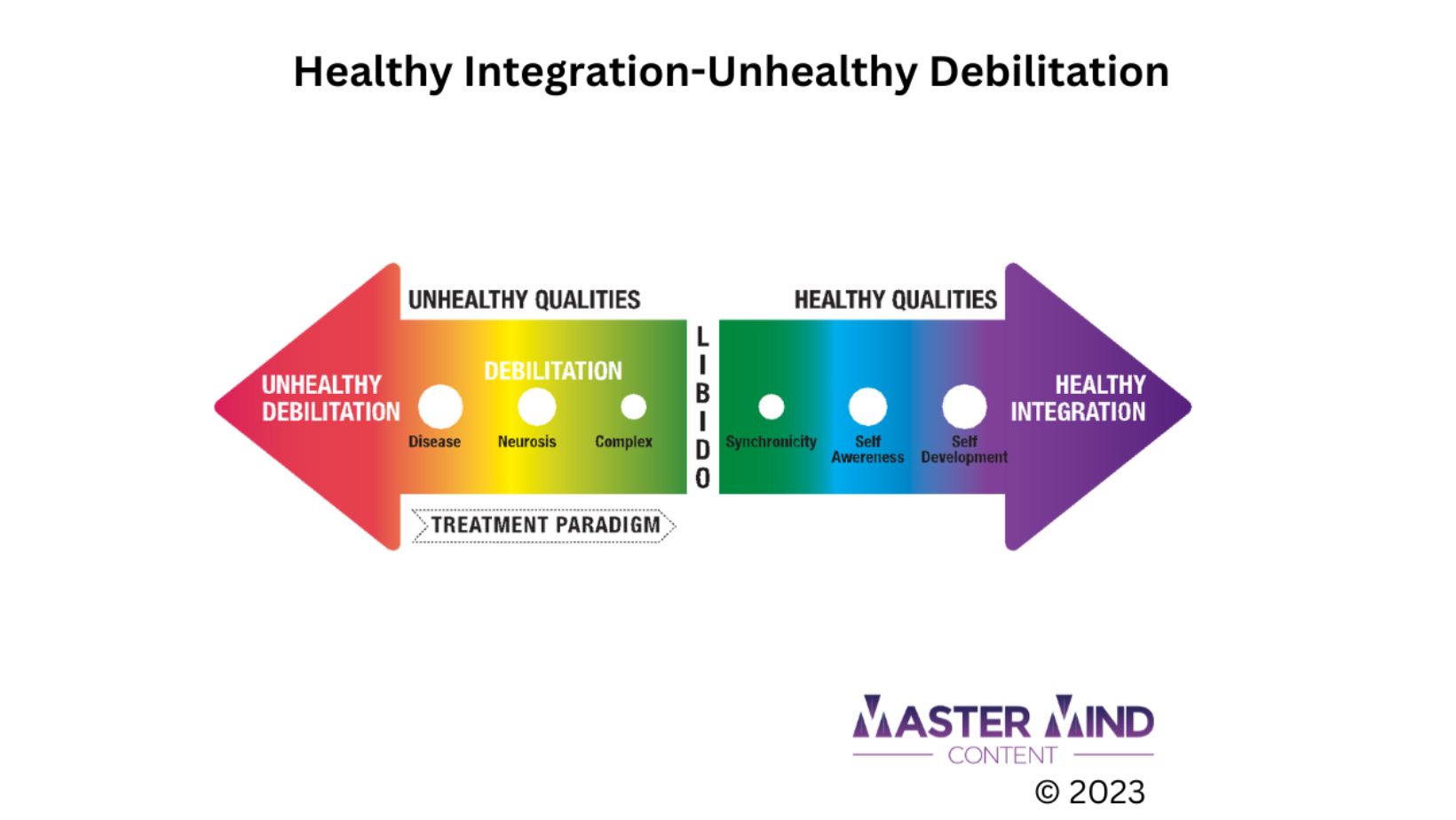
Jung’s model of the mind also illustrates that archetypal energies take possession of the ego and impress on conscious awareness by way of a complex. A complex becomes a neurosis and a neurosis becomes a disease.
In other words, archetypal energies have a life of their own and influence our personal experiences of life — even though we are not consciously aware of why the impulse, drive or motivation is surfacing. We just feel compelled to do something that provides relief or gratification because we want it.
We want it because a subconscious program informs the ego that we want it. We, therefore, become one-sided and imbalanced. Jung noted we can identify when the personality is unbalanced because there is an over-emphasis on one function which is synonymous with repression of the other. [20]
We can, therefore, say that the archetypes are a part of our personality that creates the conflict between the Self and the ego. But conflicts are created so we can discover something about ourselves and integrate dismembered content into the conscious personality.
Thought-Provoking Quote
“The loss of a soul [Splitting-off of consciousness] corresponds with the tearing loose of an essential part of one’s nature; it is the disappearance and emancipation of a complex [archetype] which therewith becomes a tyrannical user of consciousness, oppressing the whole man; it’s throws him out of his course and constrains him to actions whose blind one-sidedness has self-destruction as its inevitable issue.”
~ Carl Jung, CW6, Psychological Types [21]
In Jung’s model of the mind, we can see that a complex is essentially an archetypal energy that takes “possession” of the ego and prompts us to perform a specific action or adopt a particular attitude etc.
But its real purpose serves to highlight an imbalance of energies in the structure of the whole personality which in Jung’s model of the mind is governed by the Self and the ego.
Because a complex prompts peculiar behaviours, attitudes and emotions, these “symptoms” can be observed to identify a particular archetype as shown in the Master Mind Content archetypes tool below.
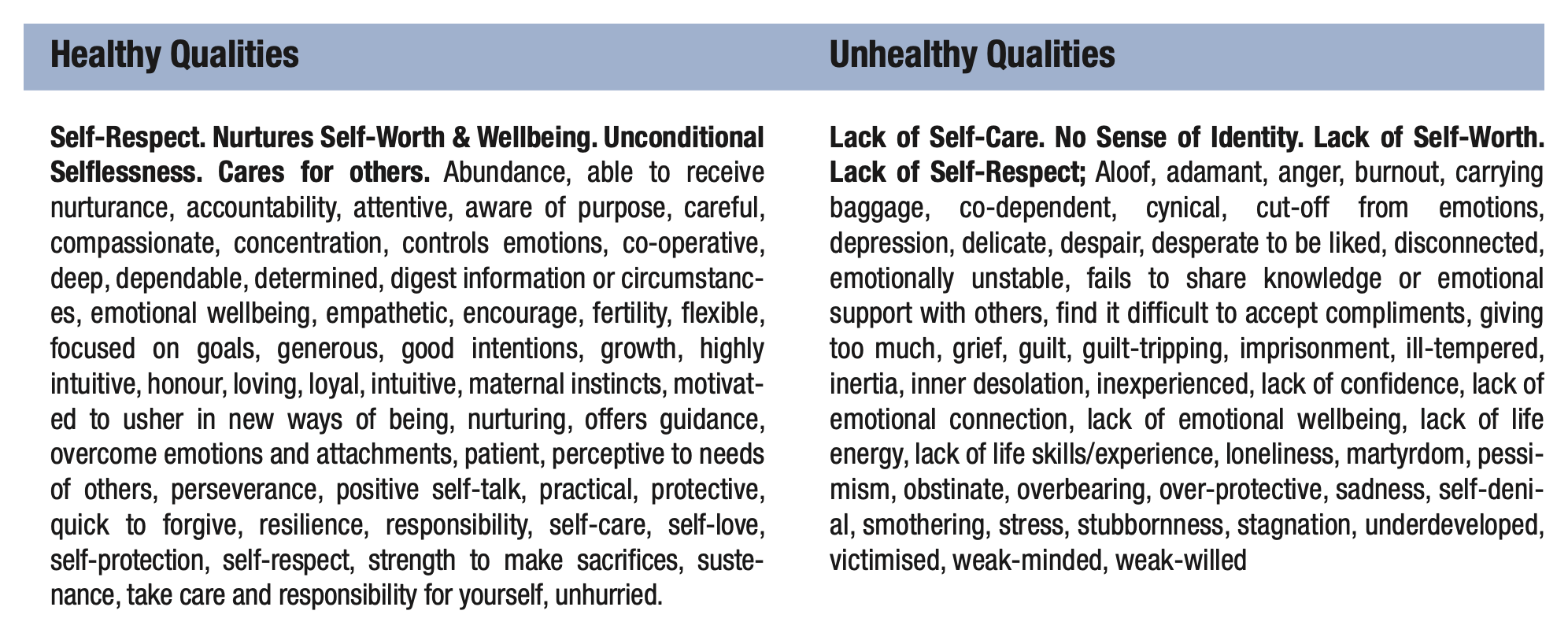
For example, distrust and anger towards the world indicate a wounded Warrior. Constant feelings of emptiness or hopelessness show a disconnect with the Divine Child. And eccentricity is associated with the wounded Creator to let people know we are different to them and do not feel as though we belong.
Although it is not clear from Jung’s model of the mind in the diagram, the Swiss also noted that archetypal energies can spring up from the Superconscious from time to time to make themselves known. These are the “moments of madness” where we act “out of character” and say things like “I don’t know what came over me” or “what on earth possessed you?”.
Although direct possession is rarer than an archetypal projection that takes possession, they are quite telling in that we get a sudden uncontrollable urge or idea that we can’t shake.
Thought-Provoking Quote
“Many complexes are merely split from consciousness because the latter [the ego] preferred to get rid of them by repression. But there are others that have never been in consciousness before and that therefore could never have been arbitrarily repressed. They grow out of the unconscious mind and invade consciousness with their weird and unassailable convictions and impulses.”
~ Carl Jung, CW11 Psychology and Religion [22]
When the ego identifies that a coping mechanism protects our emotional survival, the complex takes on a life of its own and becomes a habit. Then it becomes a subconscious program that emerges as addictions, quirks, attitudes, beliefs, and perceptions.
If a complex is not dealt with and integrated into conscious awareness in healthy and constructive ways, the energy becomes a neurosis. That means we need to identify our complexes to avoid them developing into a neurosis.
Whilst ever the ego chooses to ignore the existence of our True Nature, the archetypes, or the Self, create increasingly growing problems. The Self, therefore, is the voice in our head that we should be listening to as it passes on the message of a particular archetype.
Moreover, if we continue to be one-sided and continuously respond to subconscious programs, the archetypes can cause problems in order to highlight the limitations of our one-sided behaviour.
Thought-Provoking Quote
“A man who is possessed by his shadow is always standing in his own light and falling into his own traps. Whenever possible, he prefers to make an unfavourable impression on others. In the long run luck is always against him, because he is living below his own level and at best only attains what does not suit him.”
~ Carl Jung: CW9 Part 1, The Archetypes and the Collective Unconscious [23]
In other words, if we don’t learn life lessons by observing our complexes, nature punishes us in increasingly severe ways; from a complex, to a neurosis, to a disease.
As James Hillman noted, “The weak ego is the neurotic ego; neurosis is an ego fault; cure is control from headquarters.” [24]
Residing in headquarters is the Self which, as pointed out earlier, should have autonomy over the ego despite being the quieter voice. However, if the ego becomes inflated, we can become separated from the Self altogether.
This is why the ego either needs developing or deflating and why we should be asking do I NEED this or do I want this?
To know whether we need to develop or deflate the ego, read: “What is Ego Inflation and How Does It Happen?”
The Master Mind Content Essential Self-Development Program helps you to identify subconscious programs which prevent you from developing the whole personality. The goal is to integrate archetypal energies that are dismembered so that we are able to express our authentic Self and develop constructive ways of being that bring happiness, success and fulfilment.
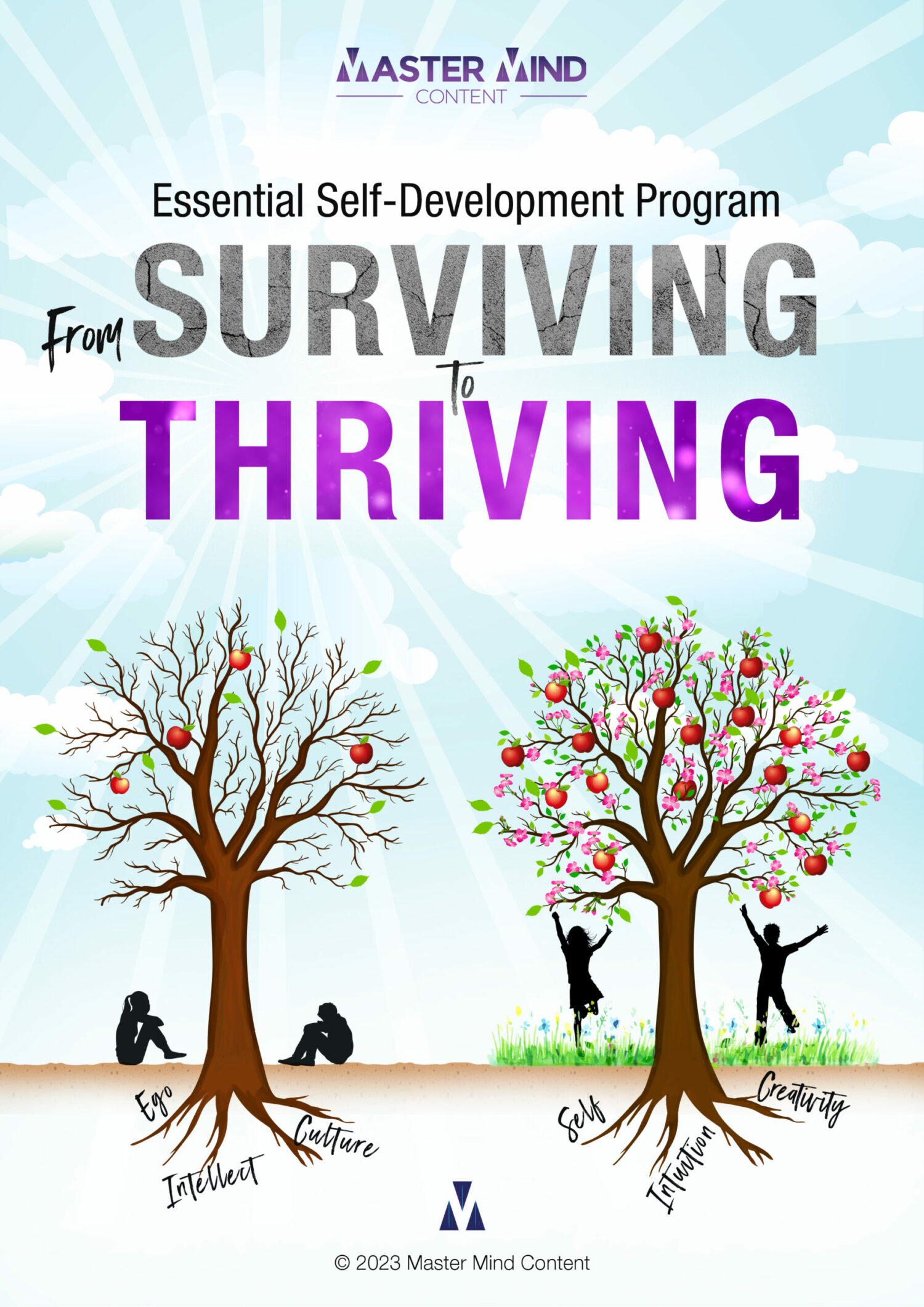
[1] Carl Jung, CW7 Two Essays on Analytical Psychology, para 111 (1928)
[2] Edward Edinger, Anatomy of the Psyche (1995)
[3] Carl Jung, CW7 Two Essays on Analytical Psychology, p.158, para 246, (1928)
[4] Carl Jung, CW9 Part 1, The Archetypes and the Collective Unconscious, 2nd ed, para 221 (1968)
[5] Ibid, para 215
[6] Jung-Pauli Letters, Atom and Archetype, p.xxxii (1968)
[7] Carl Jung, CW9 Part 1The Archetypes and the Collective Unconscious, 2nd edition, para 634, (1968)
[8] Carl Jung, CW9 Part 1, The Archetypes and the Collective Unconscious, 2nd ed, para 221 (1968)
[9] Carl Jung, CW7 Two Essays on Analytical Psychology, para 103 (1928)
[10] Re-Visioning Psychology, James Hillman, p.22 (1975)
[11] Carl Jung, CW 12, Psychology and Alchemy, para 410, (1952)
[12] Carl Jung, CW9 Part 1, The Archetypes and the Collective Unconscious, 2nd ed, para 3 (1968)
[13] Edward Edinger, Ego and Archetype p.3 (1992)
[14] Abraham Maslow: Toward A Psychology Of Being, p.159, Kindle Loc 3155 (1962)
[15] Carl Jung, CW7 Two Essays on Analytical Psychology, para 92 (1928)
[16] Carl Jung, Man and His Symbols, p.79 (1964)
[17] Carl Jung, CW9 Part 1, The Archetypes and the Collective Unconscious, 2nd ed, para 477 (1968)
[18] Carl Jung, CW9 Part 1, The Archetypes and the Collective Unconscious, 2nd ed, para 220 (1968)
[19] Gabor Mate, When The Body Says No (2003)
[20] Carl Jung, CW6, Psychological Types, pp.80-81 (1923)
[21] Ibid, p.279
[22] Carl Jung, CW11 Psychology and Religion, trans. R.F.C. Hull. p.15 (1958)
[23] Carl Jung: CW9 Part 1, The Archetypes and the Collective Unconscious, 2nd ed, transl. R. F. C. Hull, para 222 (1968)
[24] James Hillman, Re-Visioning Psychology, p.26 (1975)
